If you enjoyed my initial post about Keukenhof, you will appreciate this one as well. Keukenhof has a lot more to offer and in this additional post you will understand why.
The first thing I noticed when I arrived, was the crowds of people entering. I thought "this will not be an easy walk in the park”.

Keukenhof is reputedly one of the busiest tourist destinations in The Netherlands and it was confirmed. However, the crowds were quickly forgotten as these springtime beauties greeted me at the entrance.

The garden grounds are filled with flowers despite the colder spring weather.
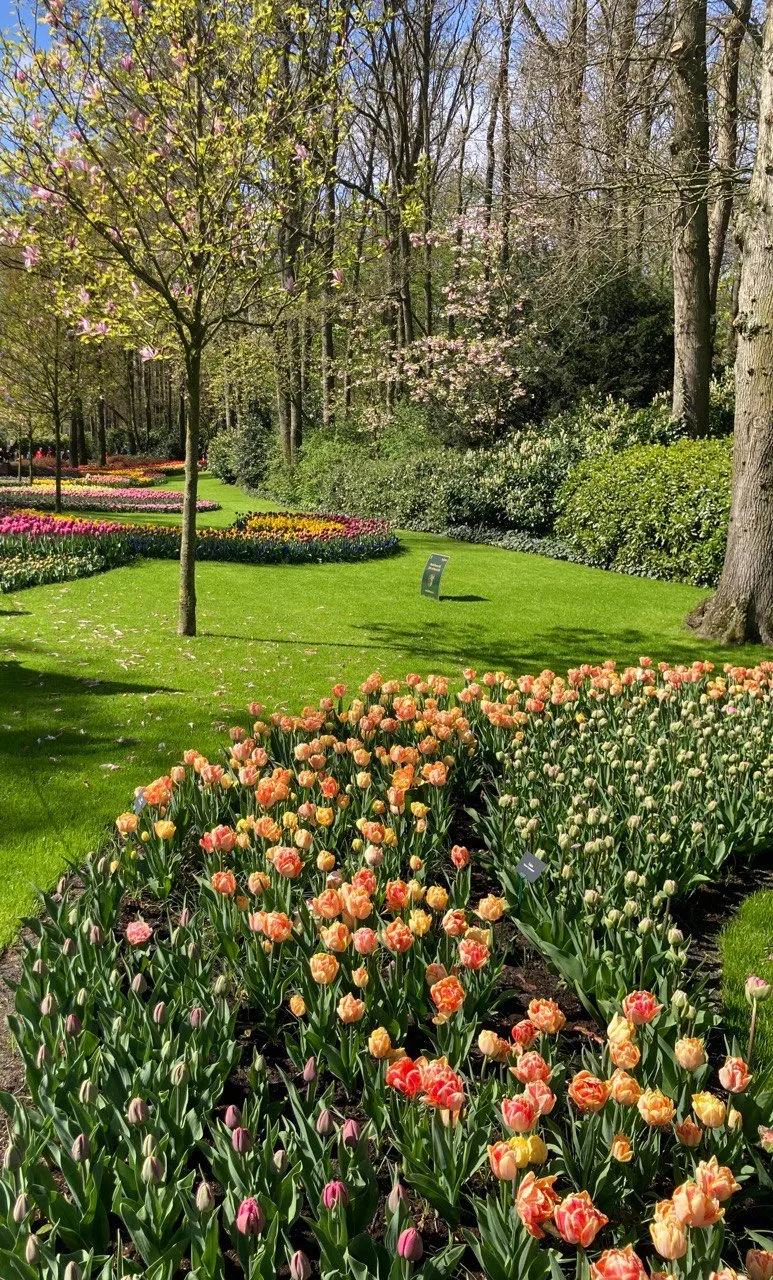
There are flowers to feast your eyes everywhere: the long straight pathways,
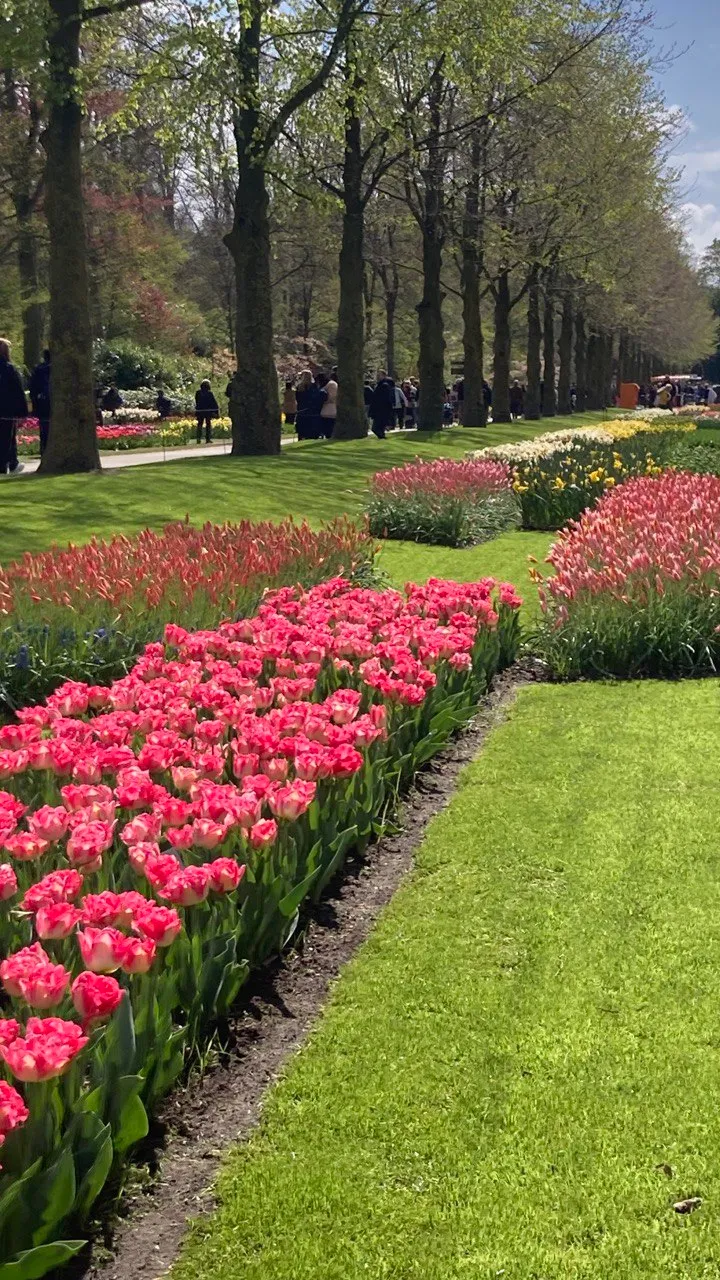
bordered by majestic trees,

the long curved pathways
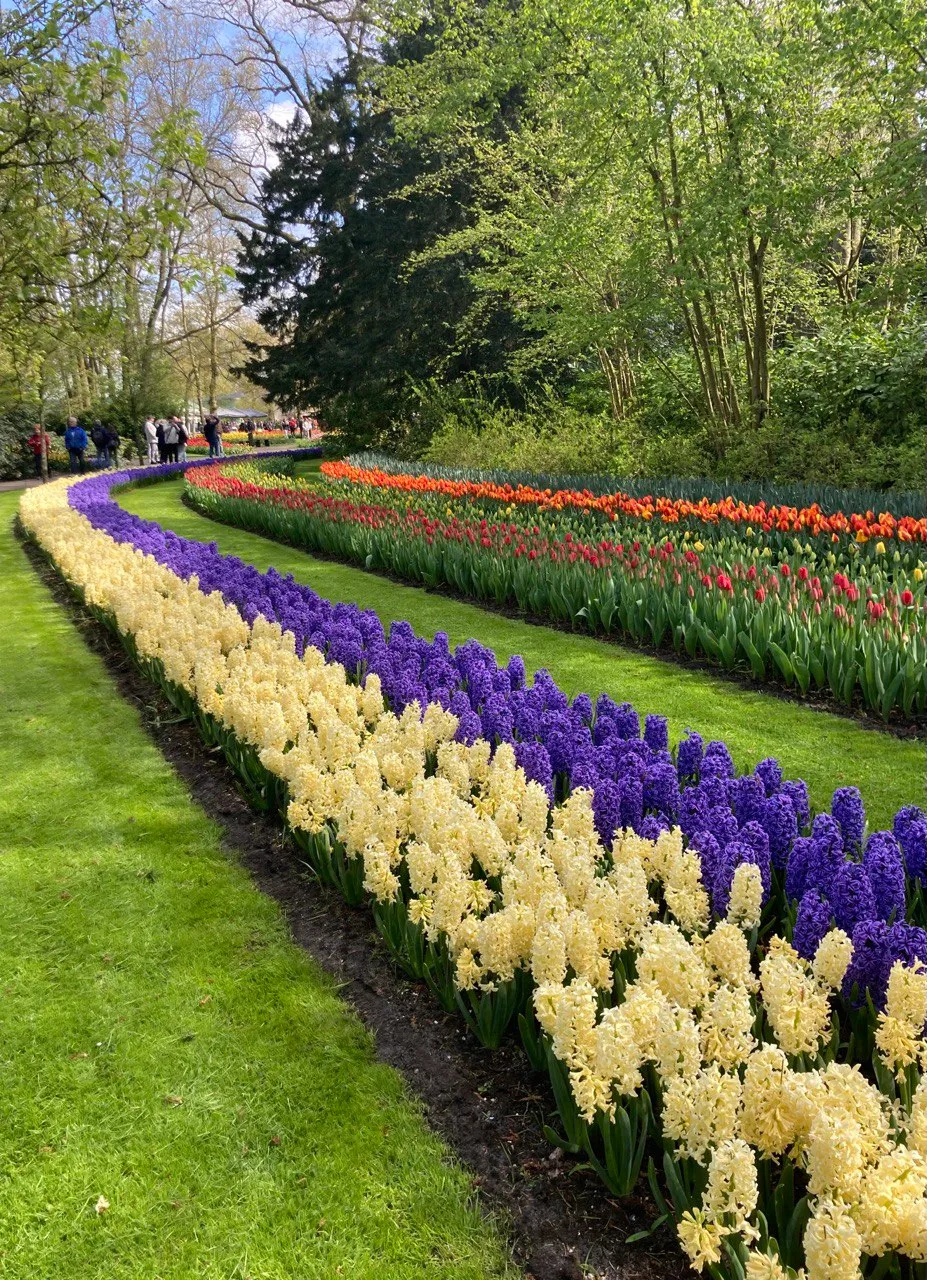
or ones surrounded by miniature palm trees
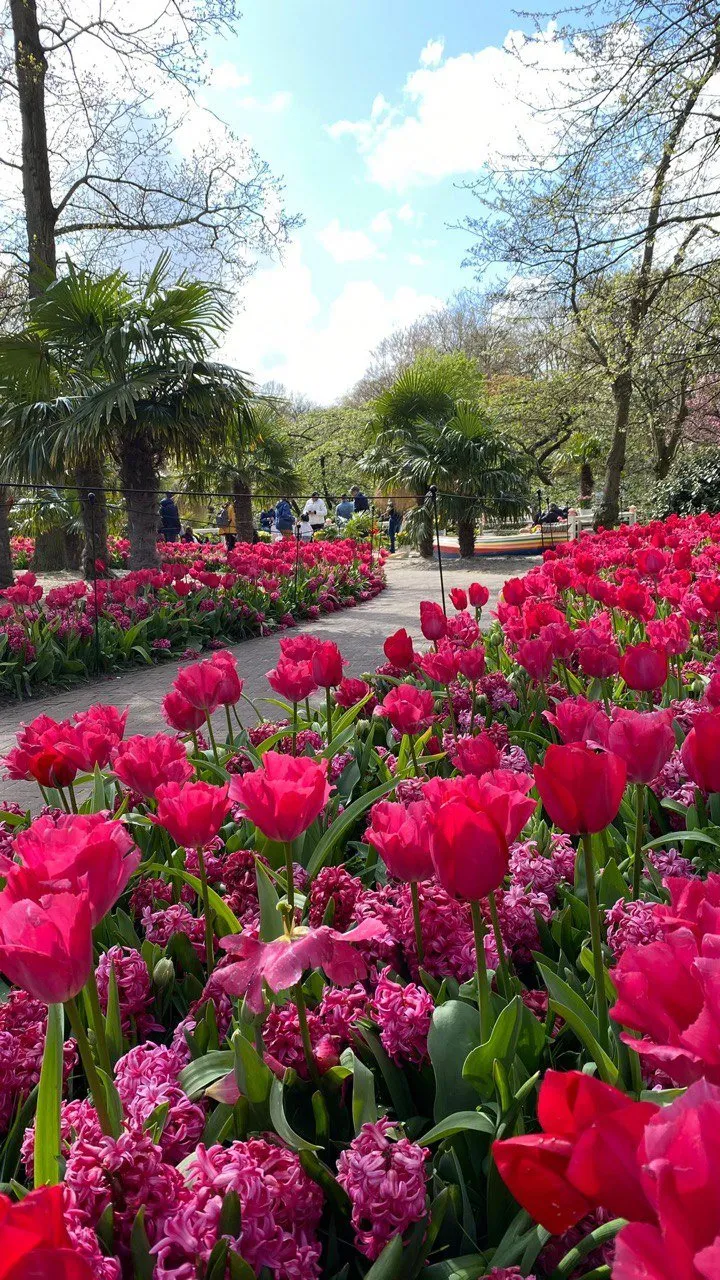
or path filled with many colors.

This sea of purple hyacinths
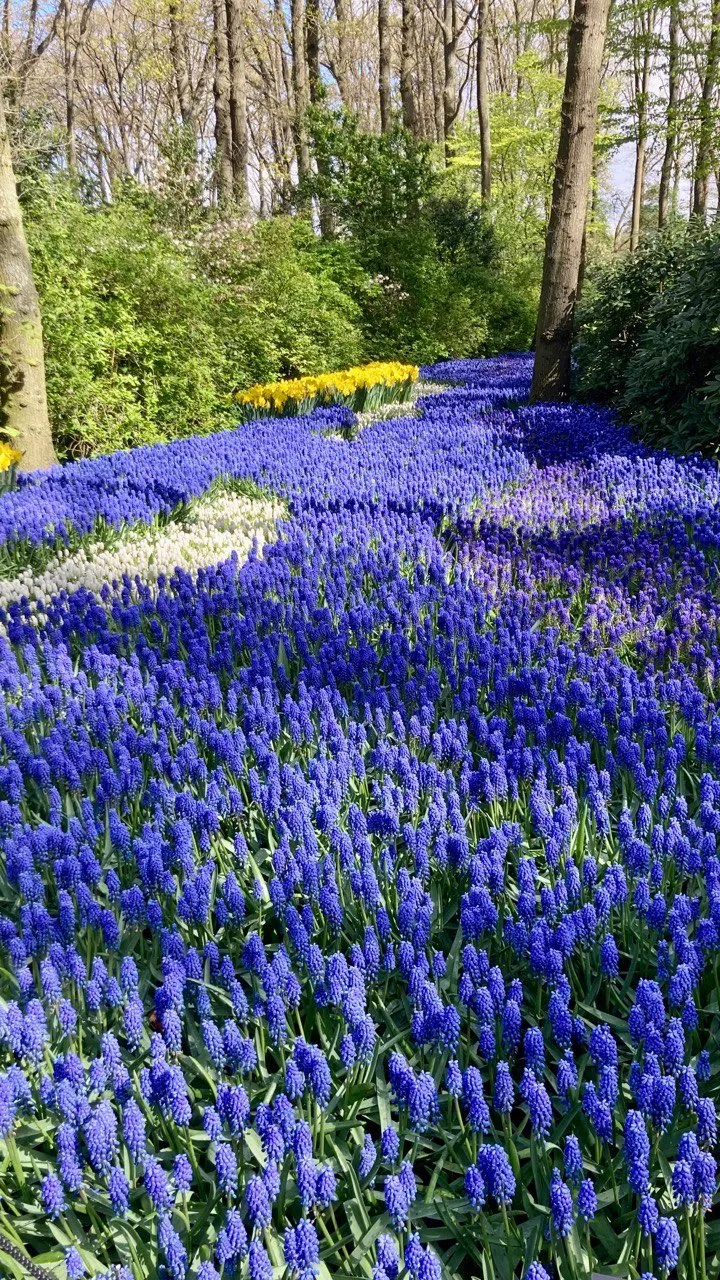
and these tulips seemed to go on forever through the woods.

The combinations of tulips with daffodils and other flowers are simply spectacular.
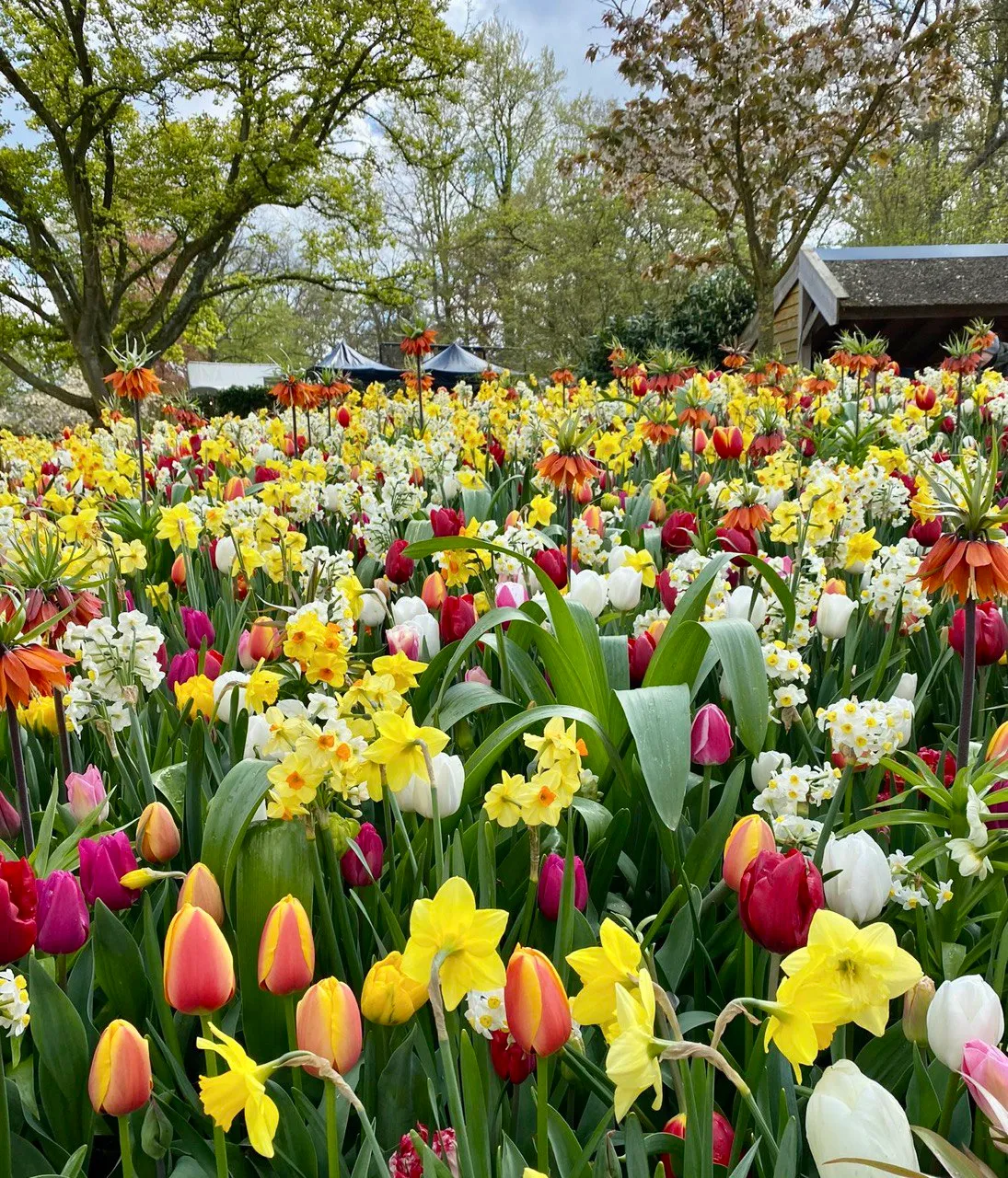
I was mesmerized by this exotic combination of tulips with crown imperials etc.

The garden is immaculately maintained.
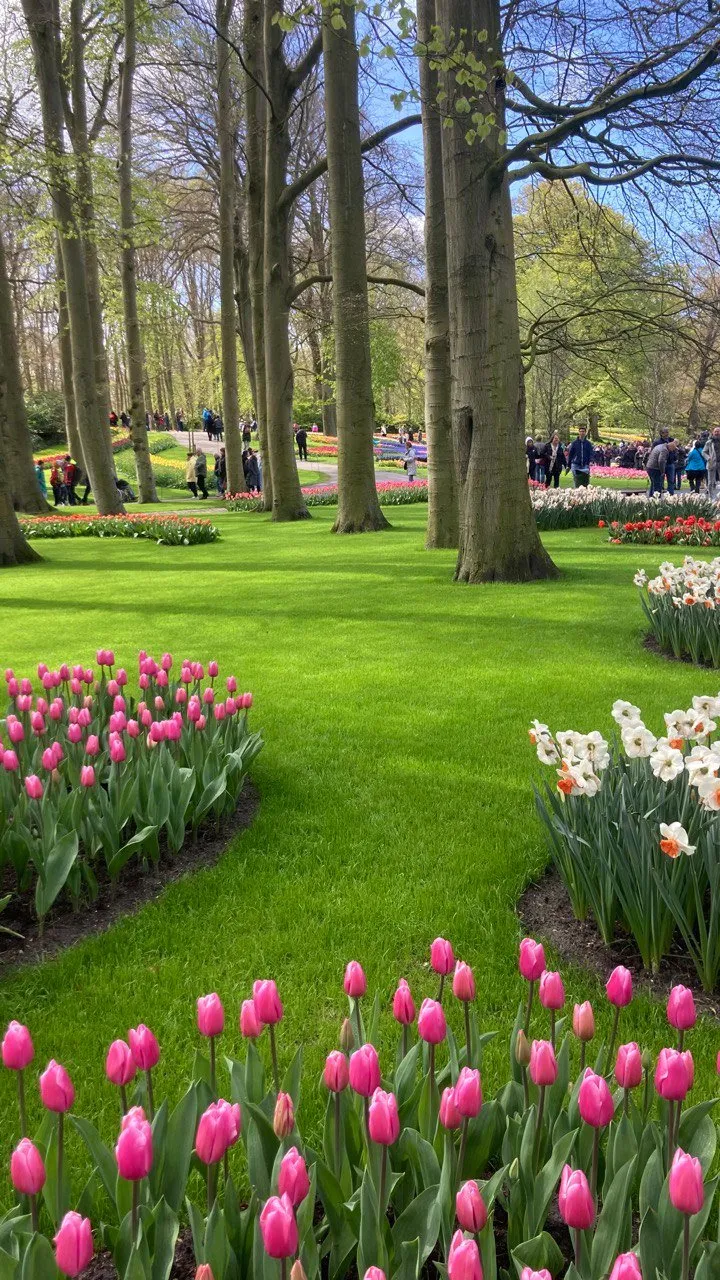
The beauty is astounding
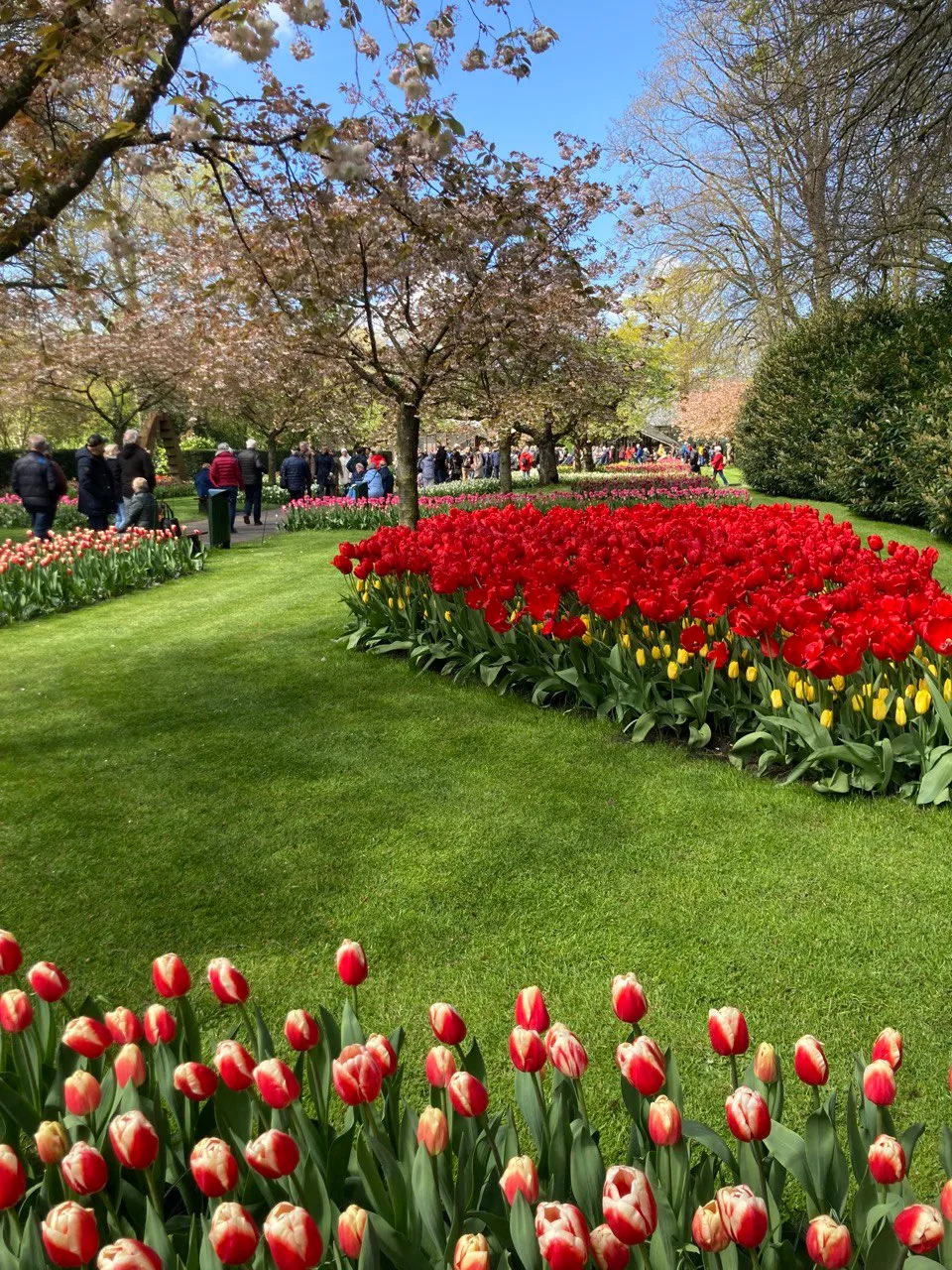
and with 32 hectares, it does not seems to stop.
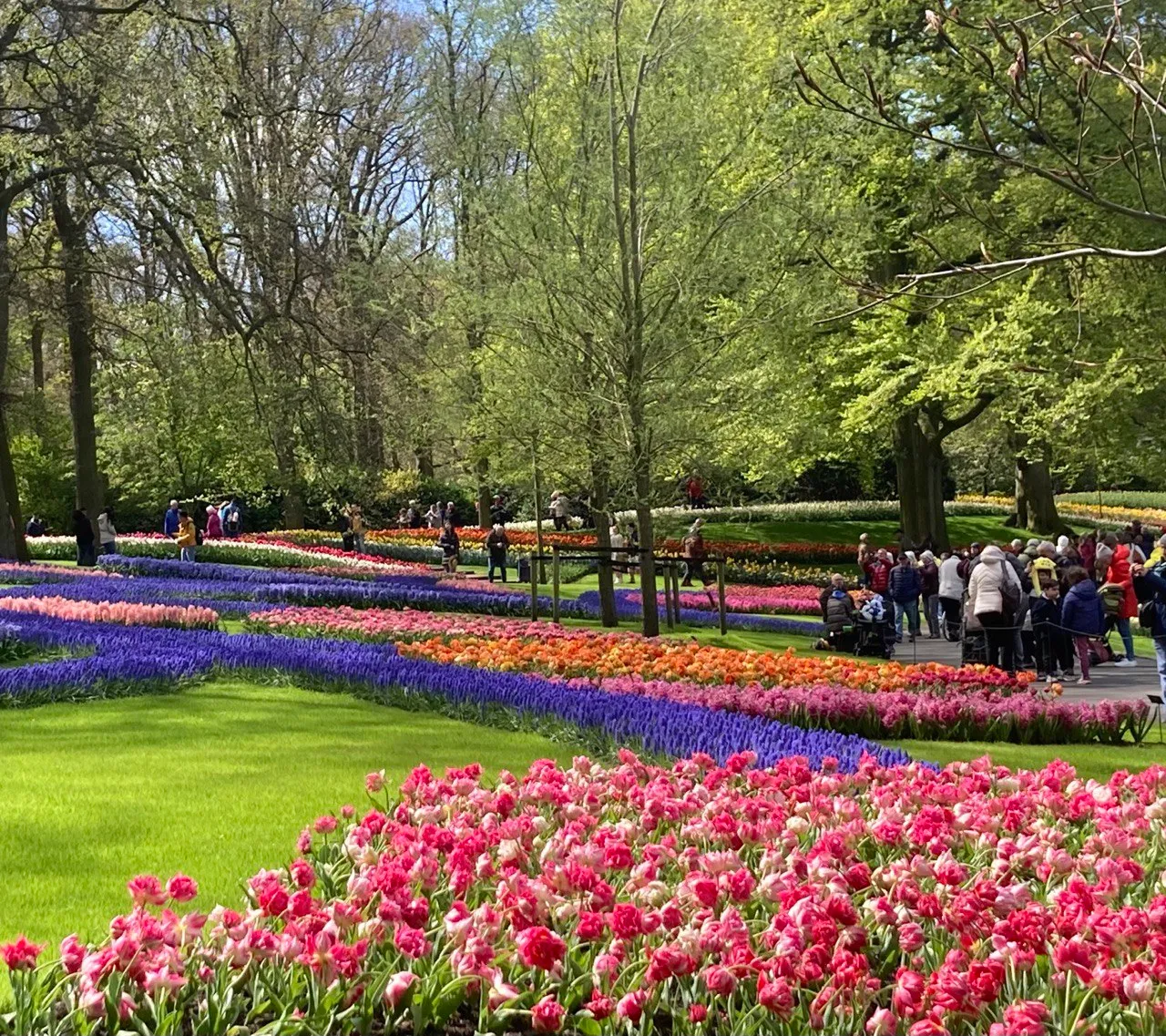
Would you dare to walk in/on the water?
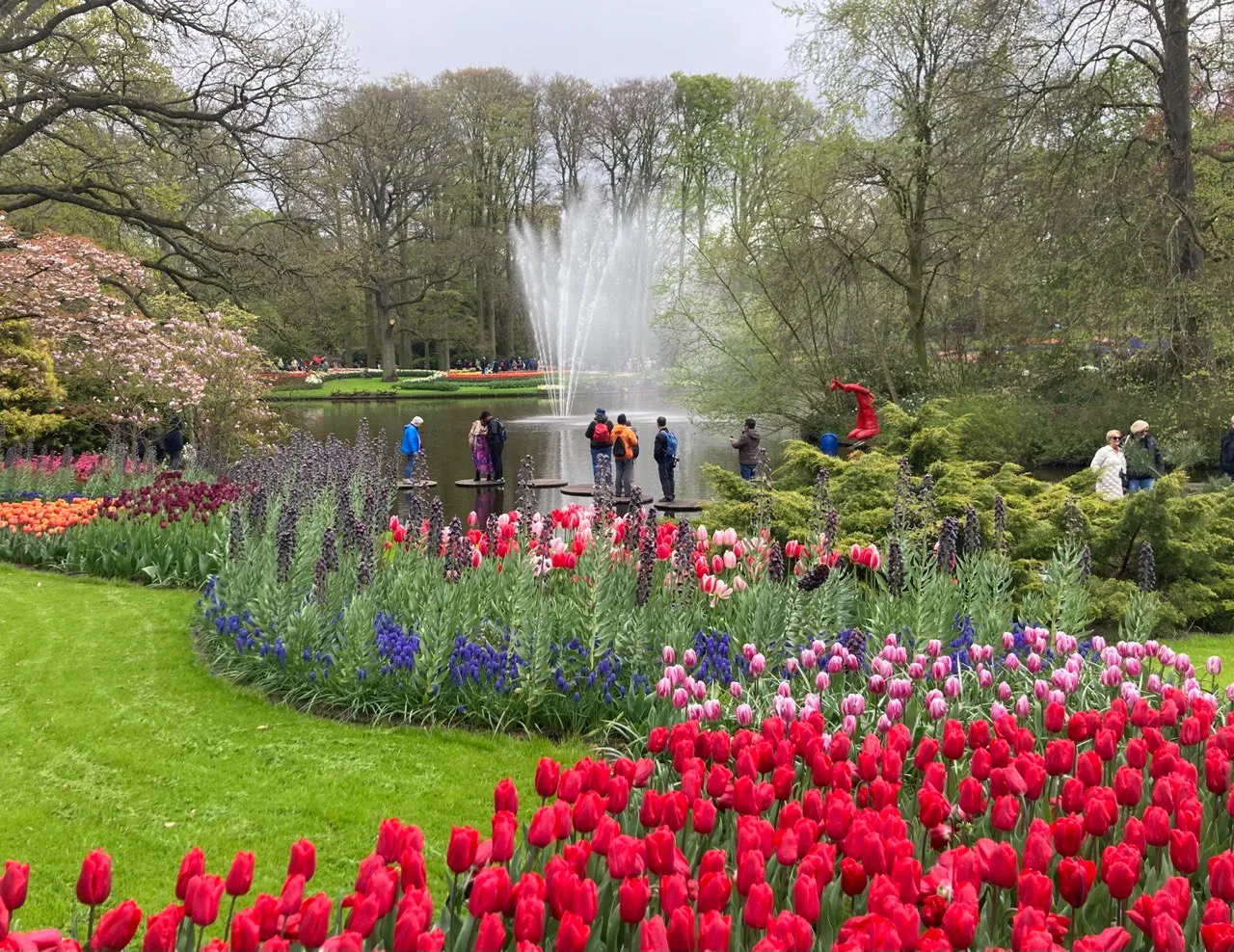
The colors were so brilliant and
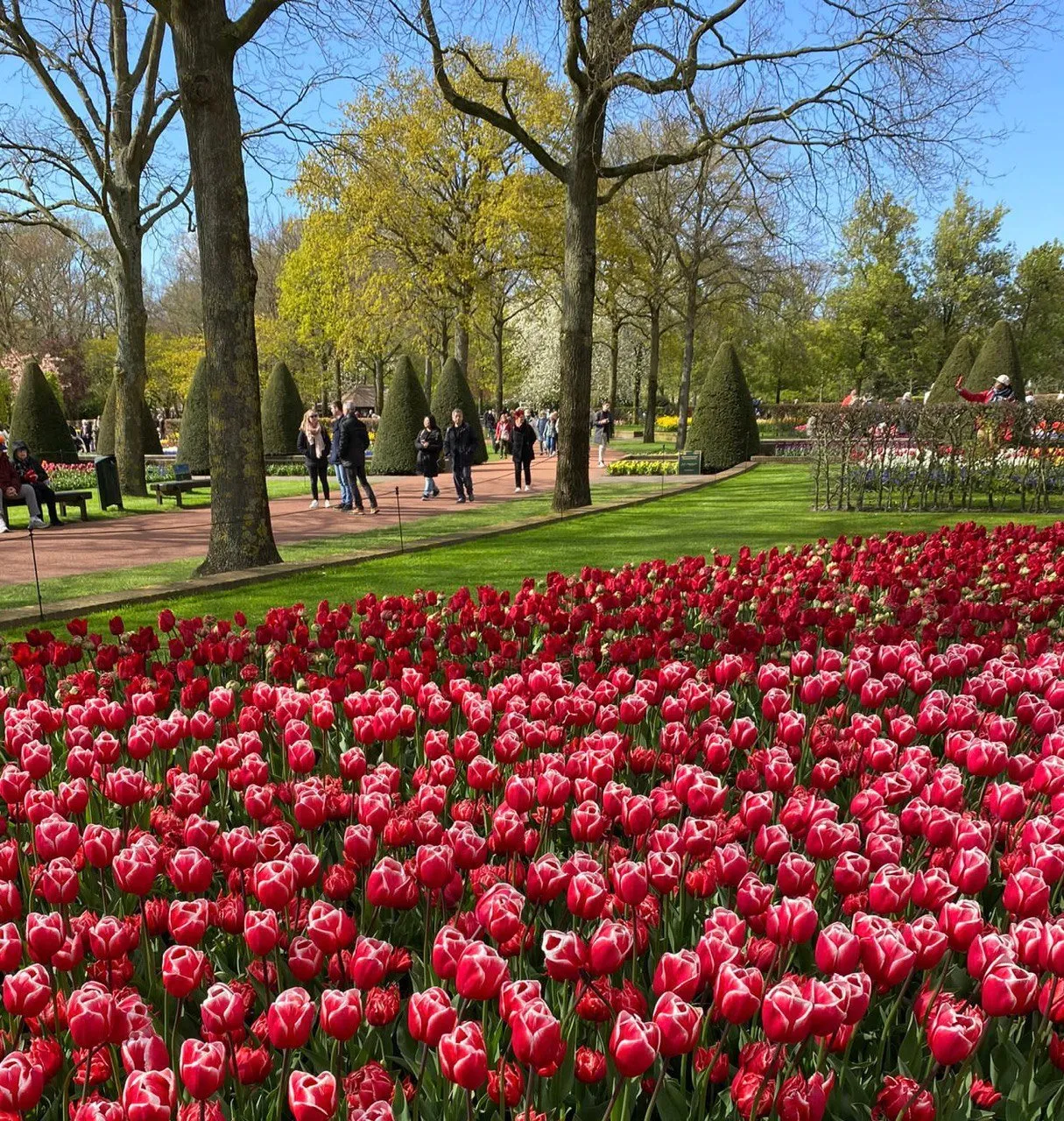
the splendor of the garden shone through.
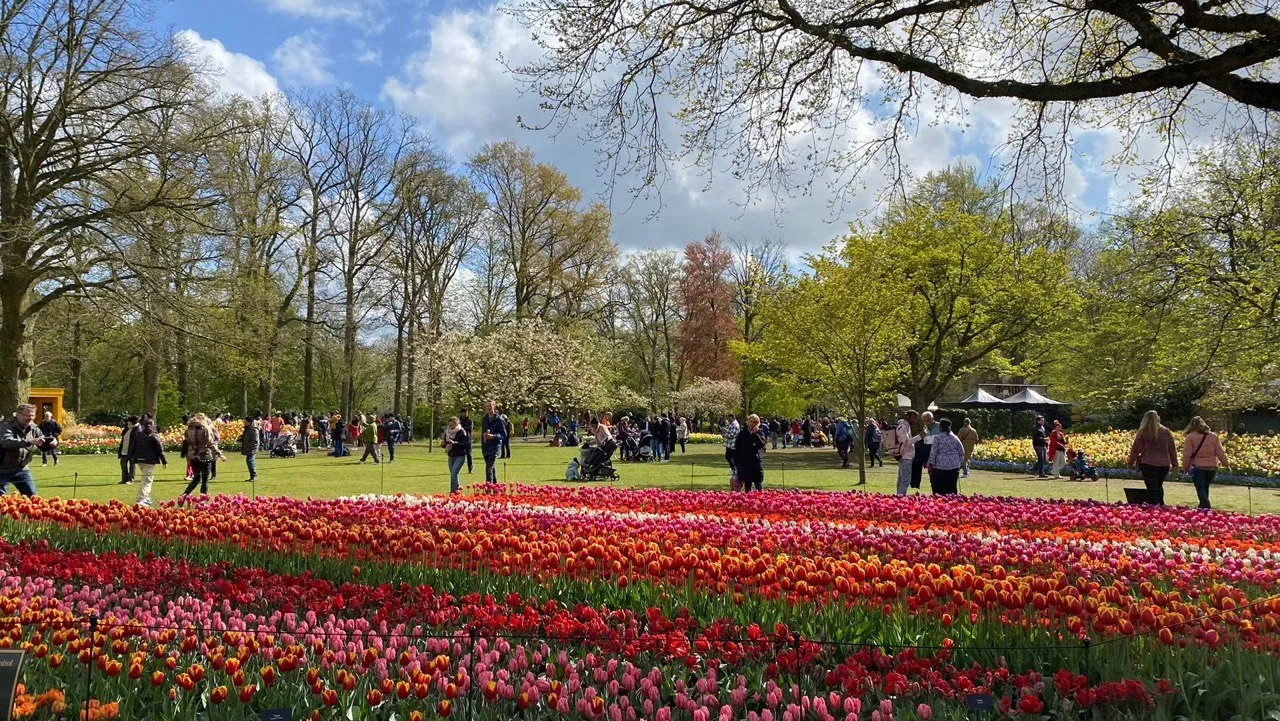
This is tulip paradise.

Even areas not awashed with color

were simply beautiful.
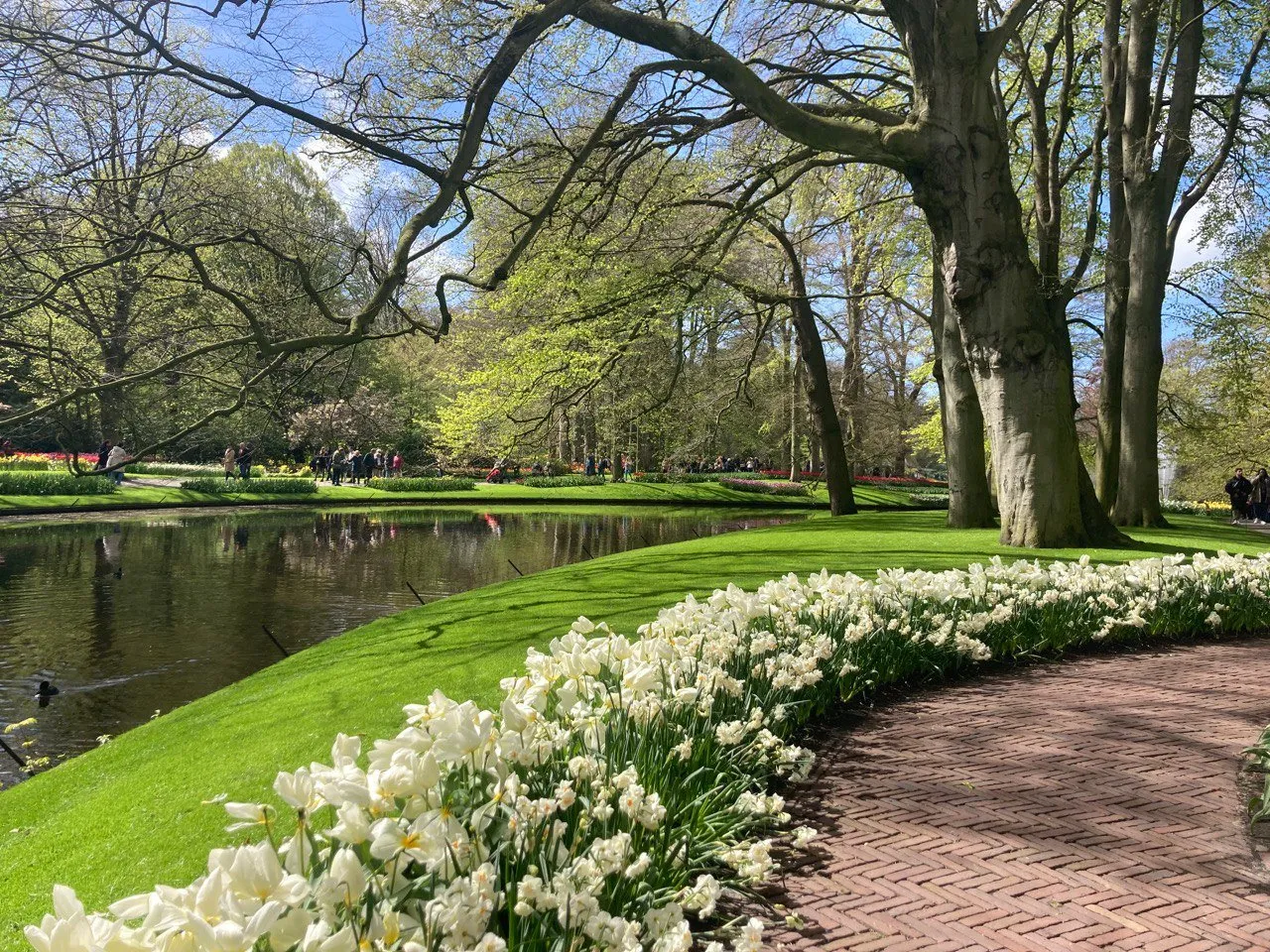
The Sculptures
Another aspect of this lovely landscape, is the amazing sculptures

price of sculpture -15,000 euros
which are strategically placed throughout the garden.
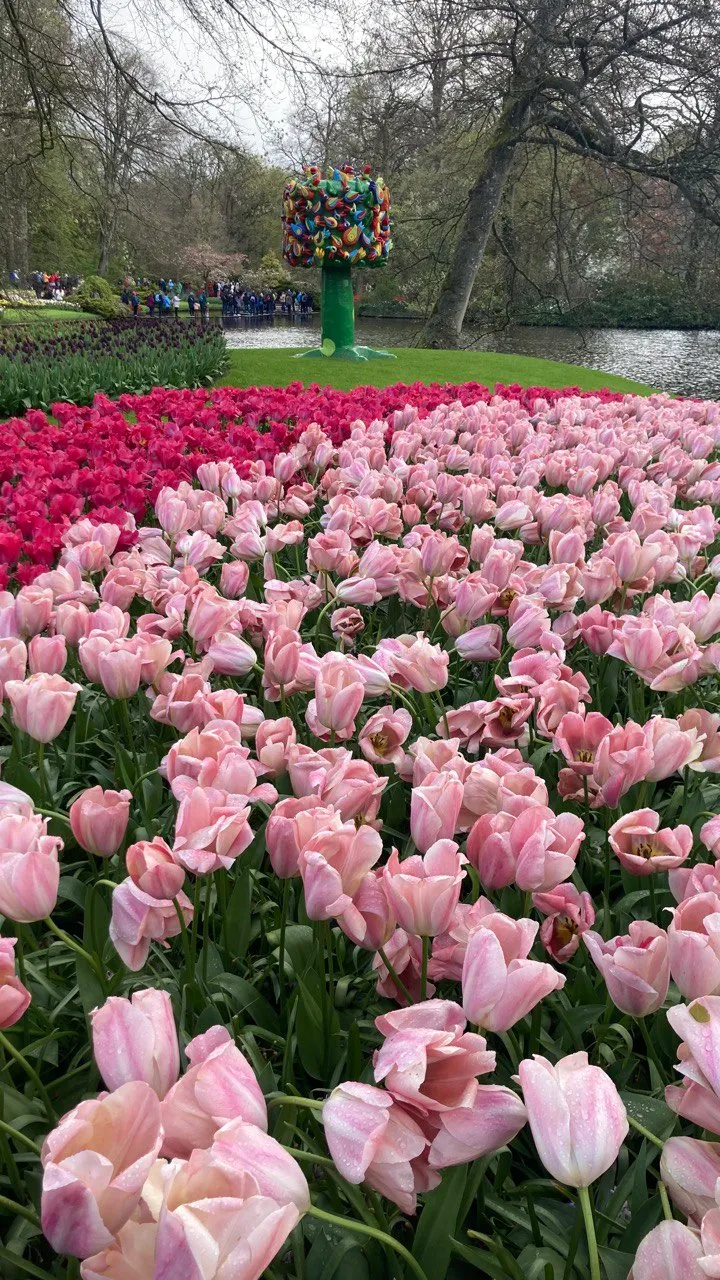
There are more than 100 sculptures.

Some are permanent,
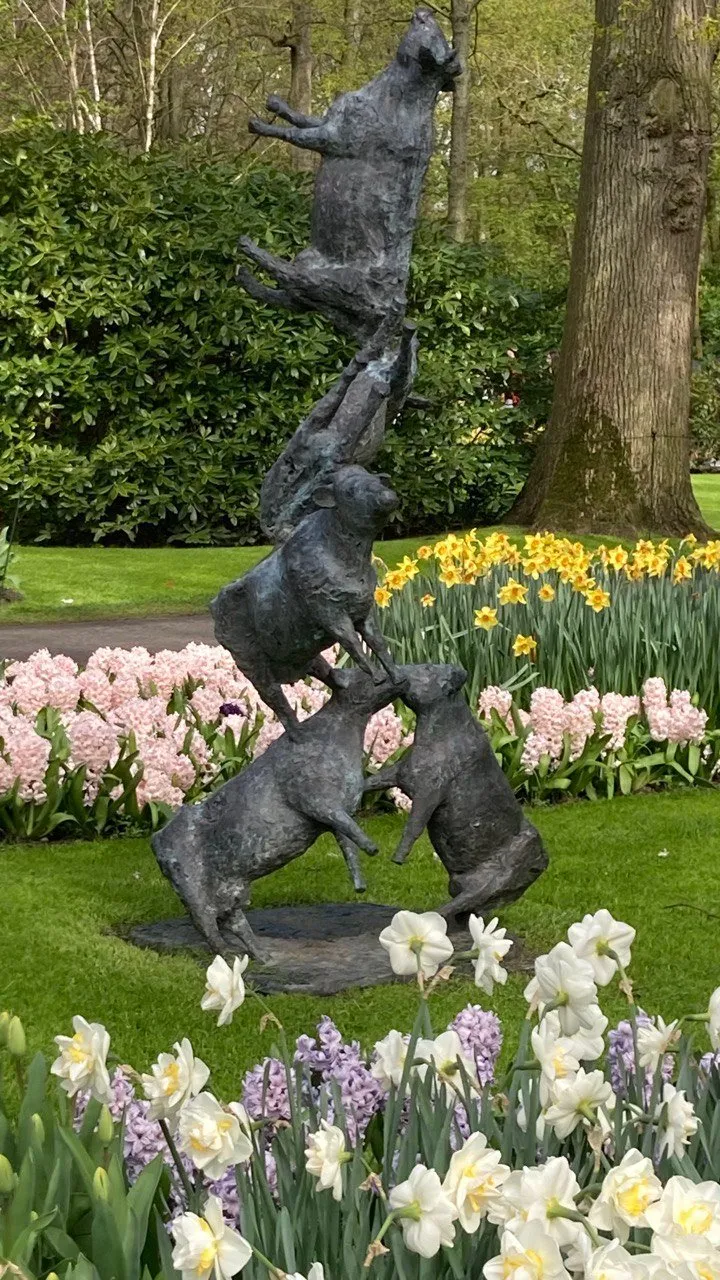
whilst others are placed yearly by new sculptors.

They stood out whilst complimenting the flowers.
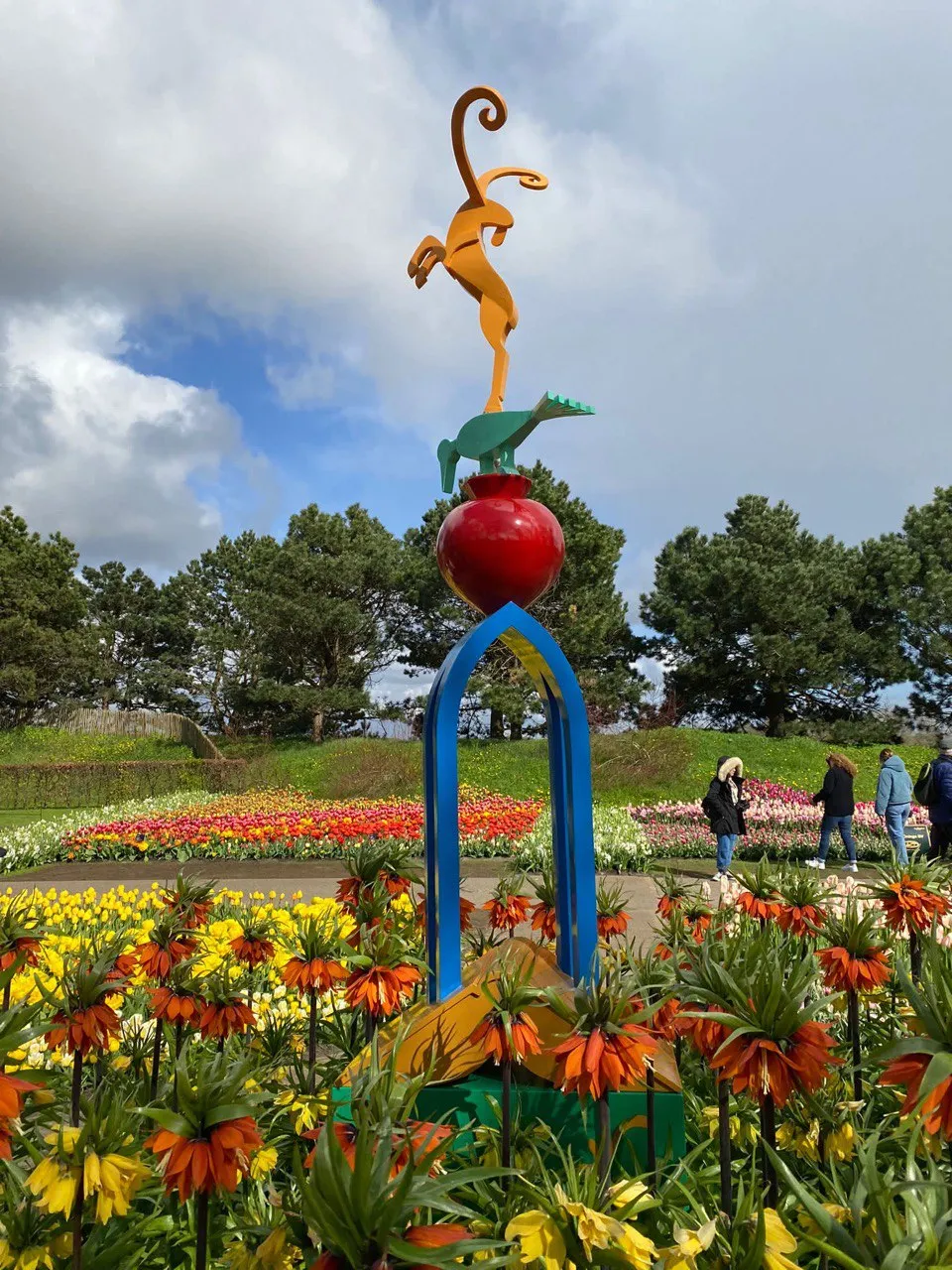
The Pavilions
There are 6 pavilions with souvenir shops, restaurant etc.
The Beatrix pavilion focuses on Orchids - one of my favorite flowers.
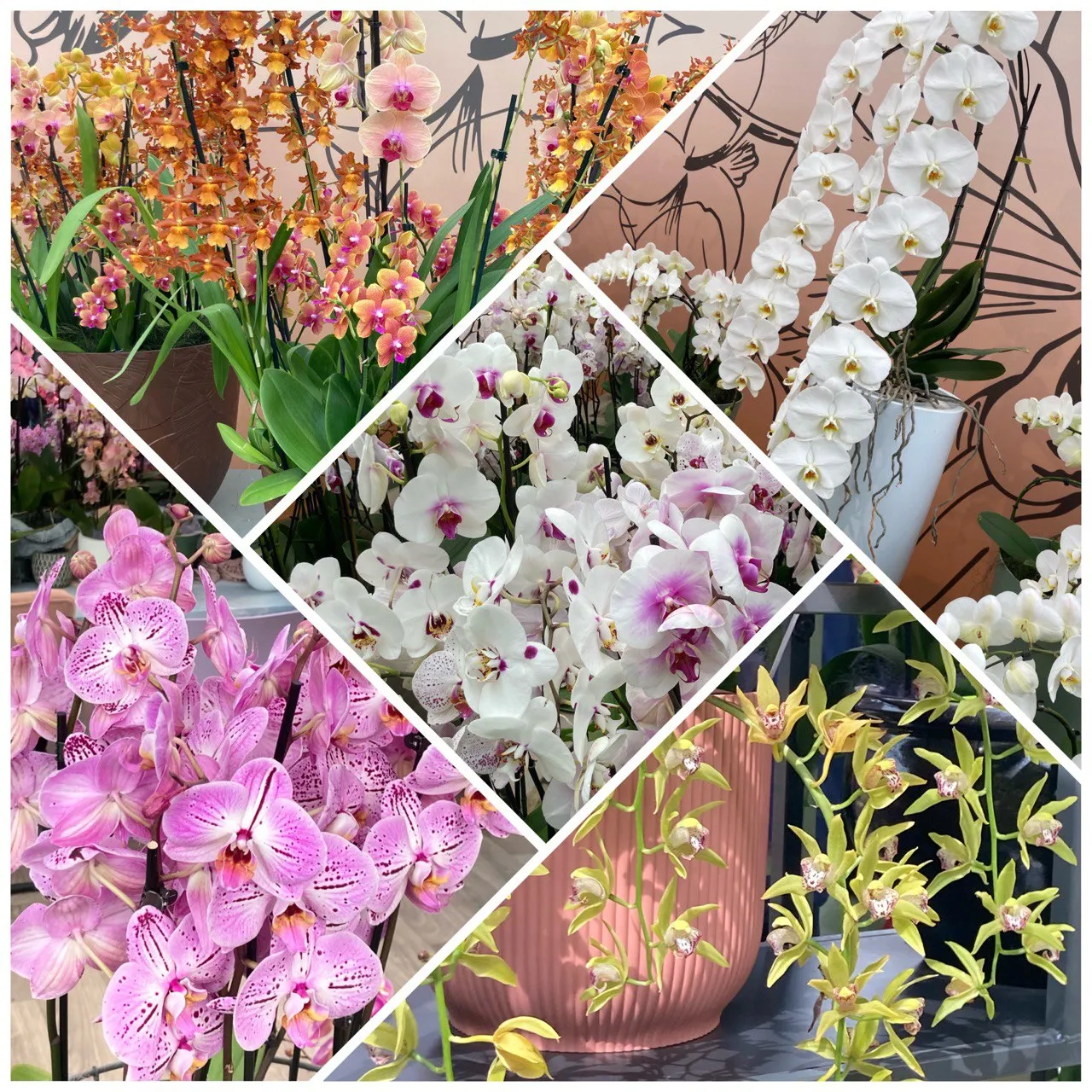
In The Juliana pavilion, the history of the tulip bulb was explained.
The tulip grew wild in the Himalayas and was brought back to the Ottoman Empire by nomadic turkish people. The Persian word for turban - "tulipan" refers to the shape of the bulb, hence the name "tulip". Sultan Soeleman the Magnificent ensured they were cultivated and bred.
A gift to the Dutch, led to the love of this special bloom which led to the so-called tulip mania in the 17th century - the dutch Golden Age.
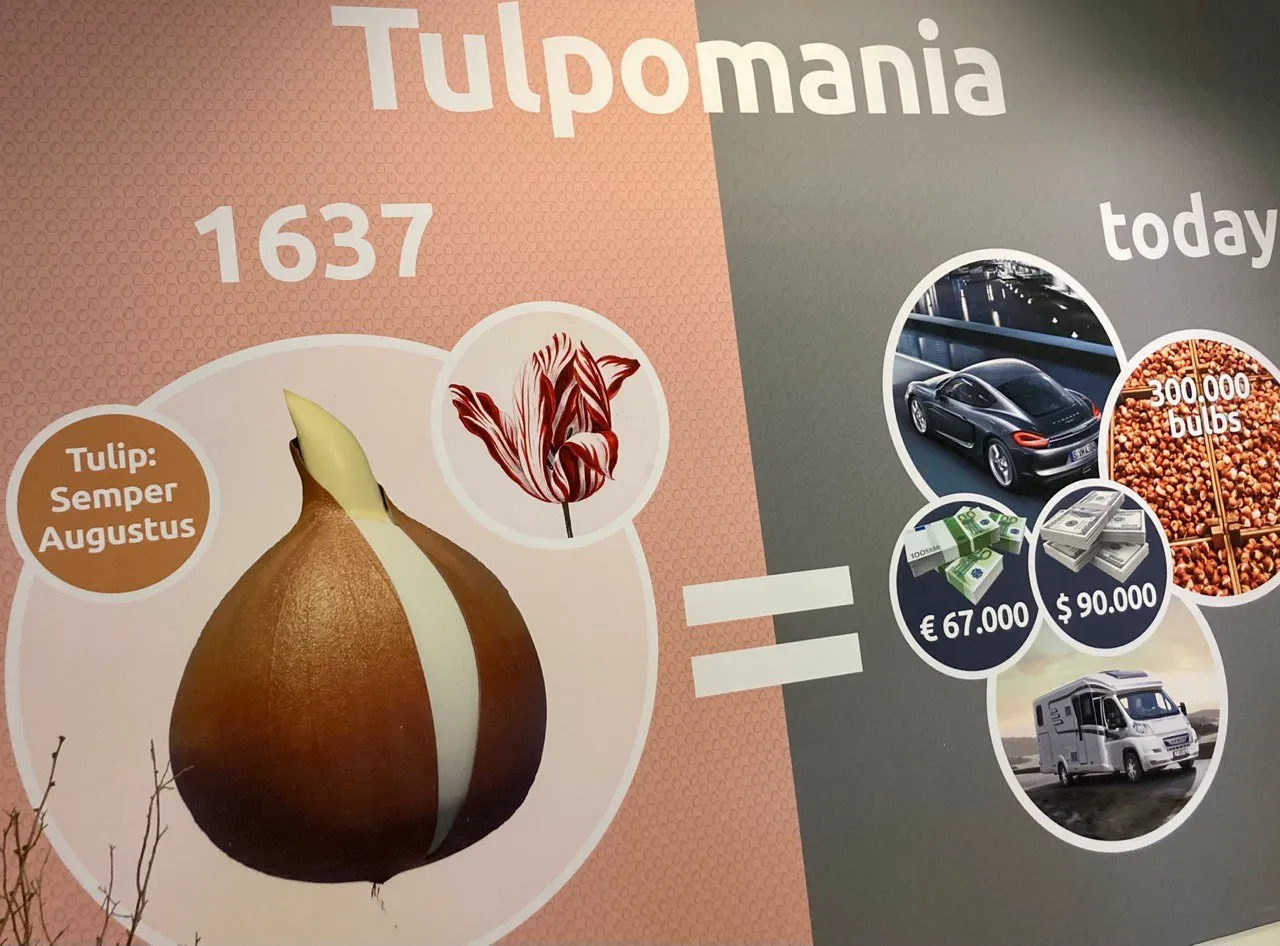
During this period, the red striped Semper Augustus bulbs were the favorites. The stripes were actually caused by aphids - so a disease on the plants. That did not matter. The price of the bulbs soared and cost more than some houses. There was a boom, then a bust and it’s known to be the first bubble.
The trade continued after the bubble burst and now more than 3000 varieties exist and are traded. In this video you can learn more about the origins of this gorgeous flower.
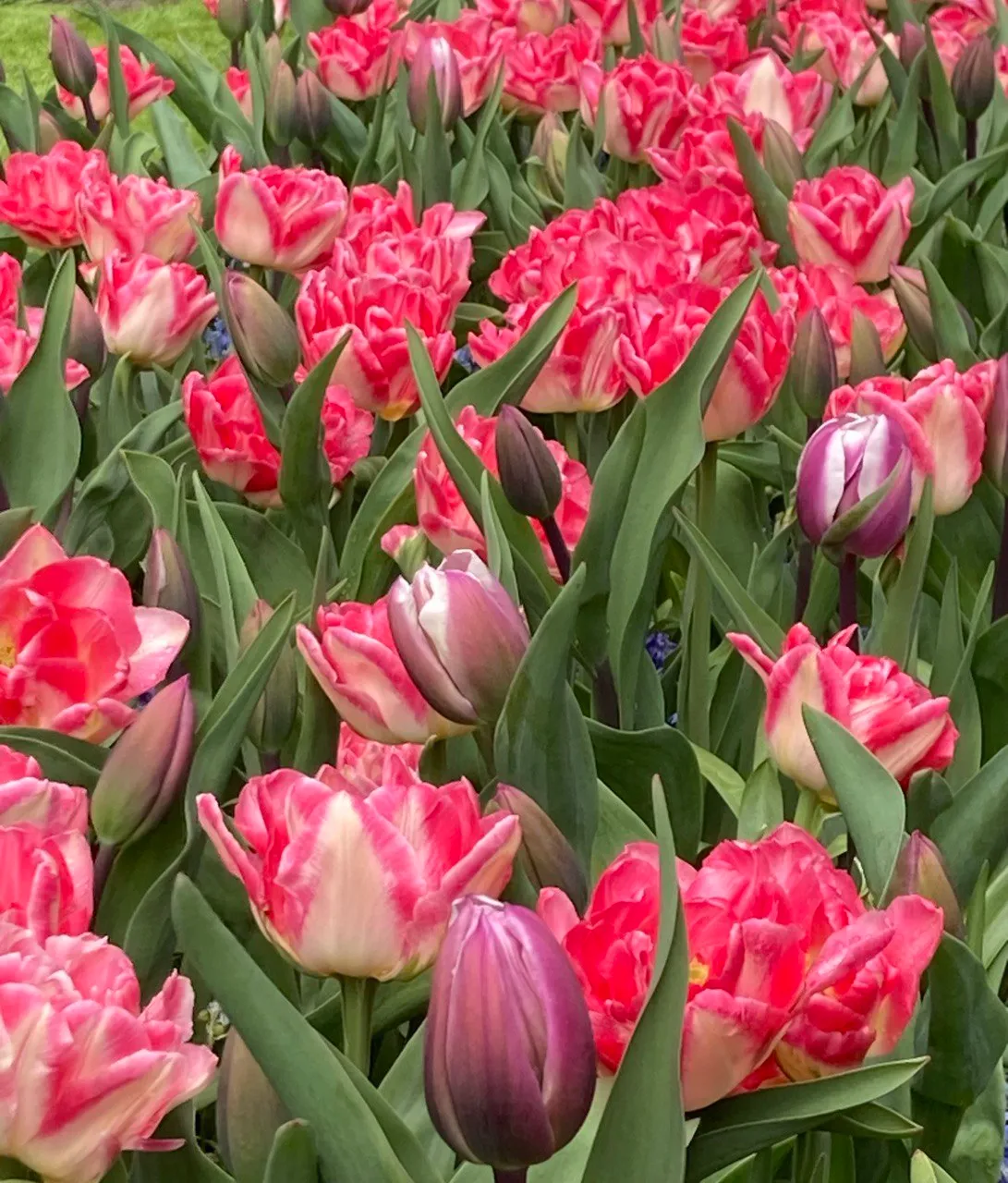
numerous petalled variety

spiky petalled variety
Typical Dutch
Nijntje (Miffy)
As this is dutch country, you can obtain a souvenir of Dik Bruna’s rabbit, Nijntje (Miffy) or view her flowery display on the the lawn
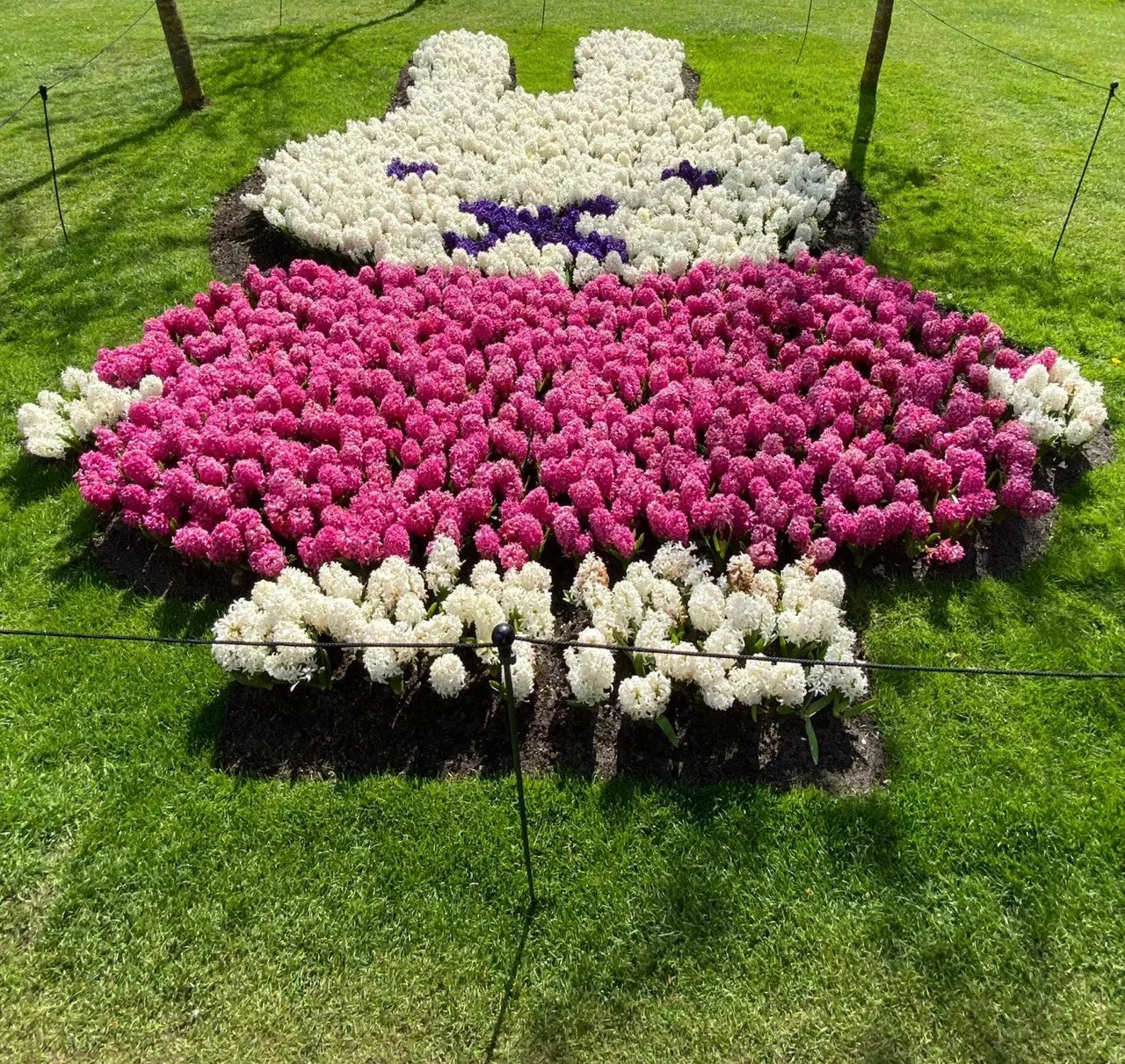
or her cute statue which stood proudly amongst the blooms.

.
The windmill and the fields
I could spot the windmill from far away.

It was beckoning me to go above-for the view- so I did. This is:
-the visitors picnic area.
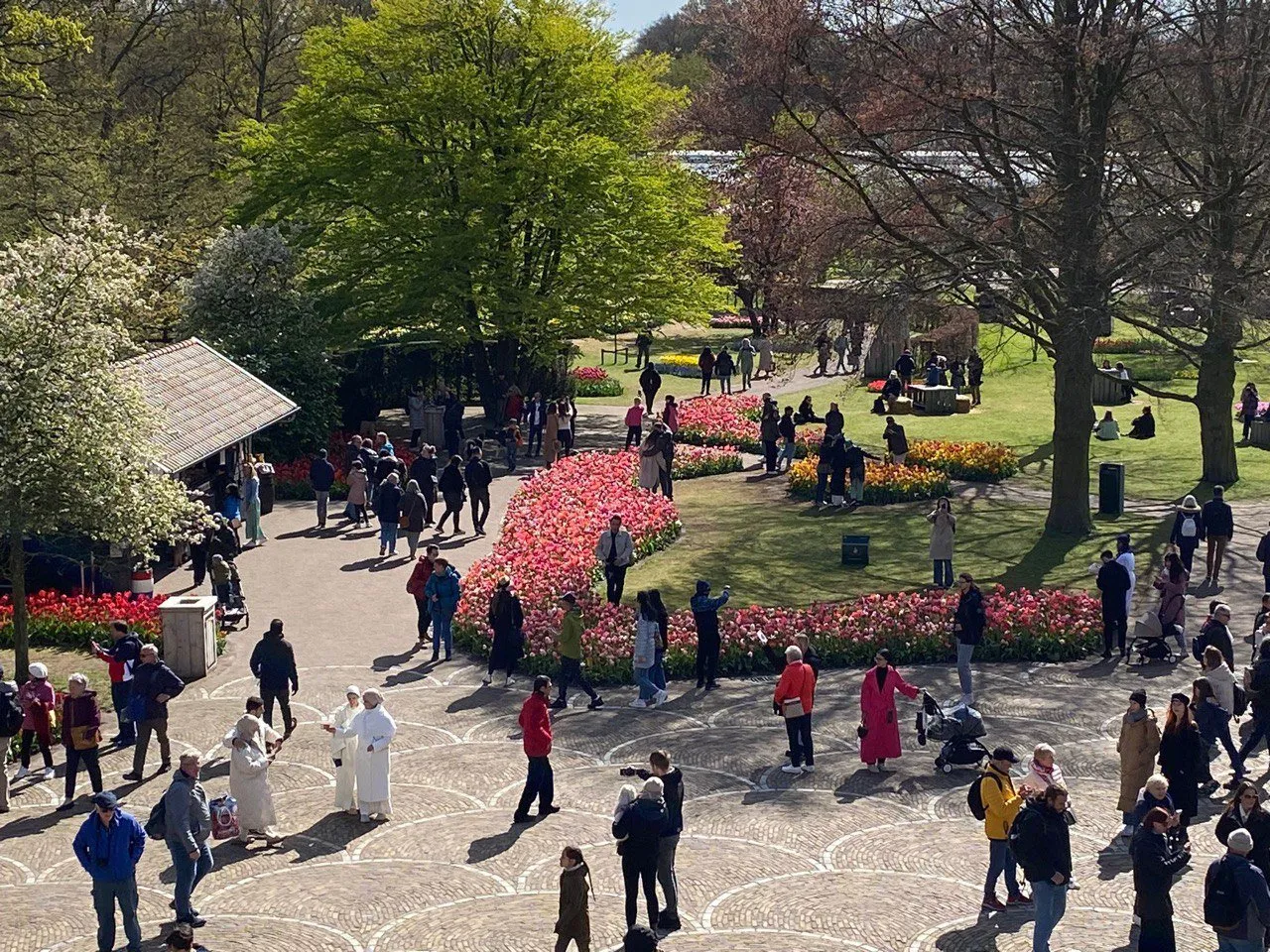
-the bridge where one can board a boat for a tour of the tulip fields.
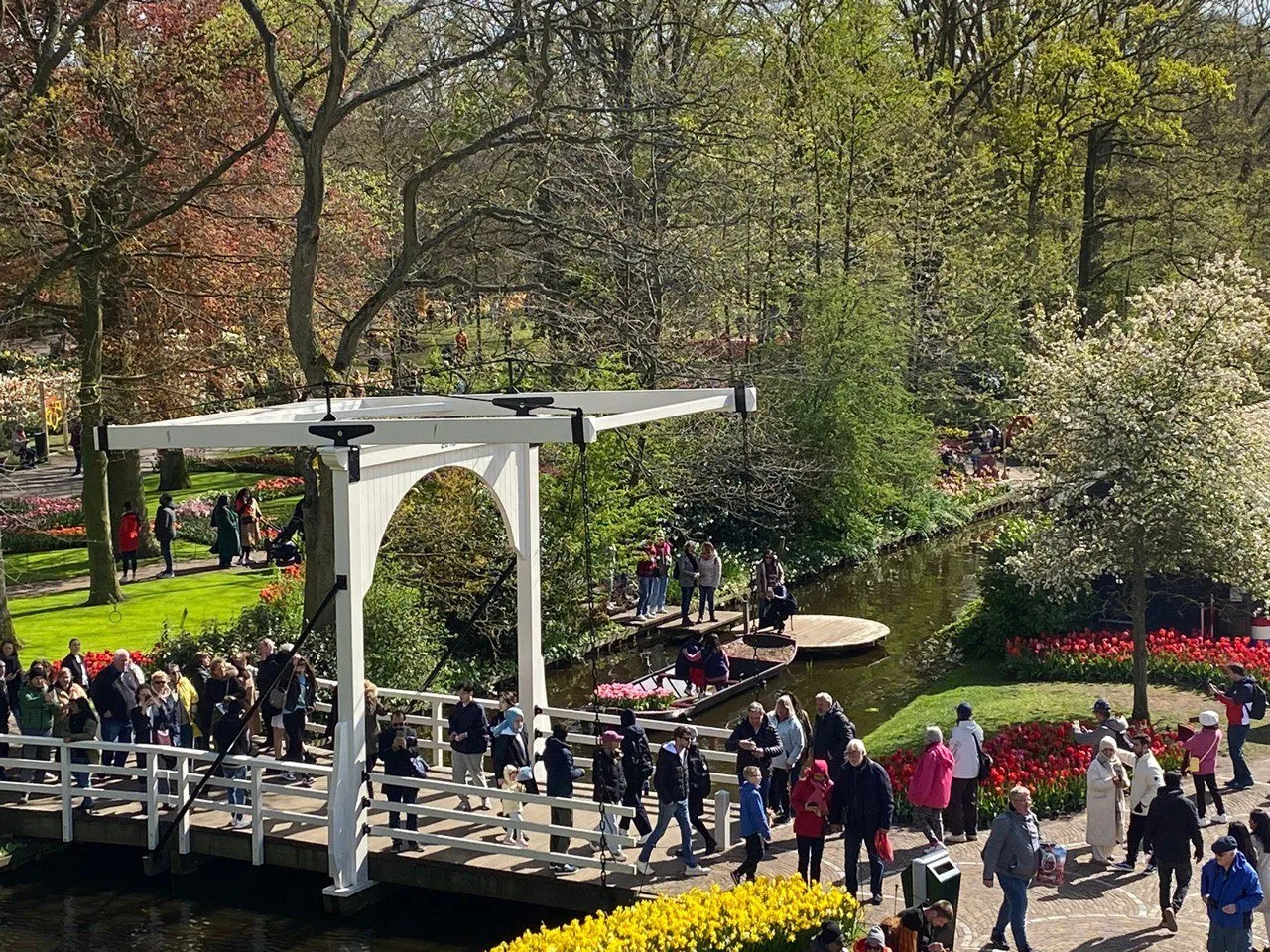
-the tulips fields.

Other fields can be seen whilst traversing,
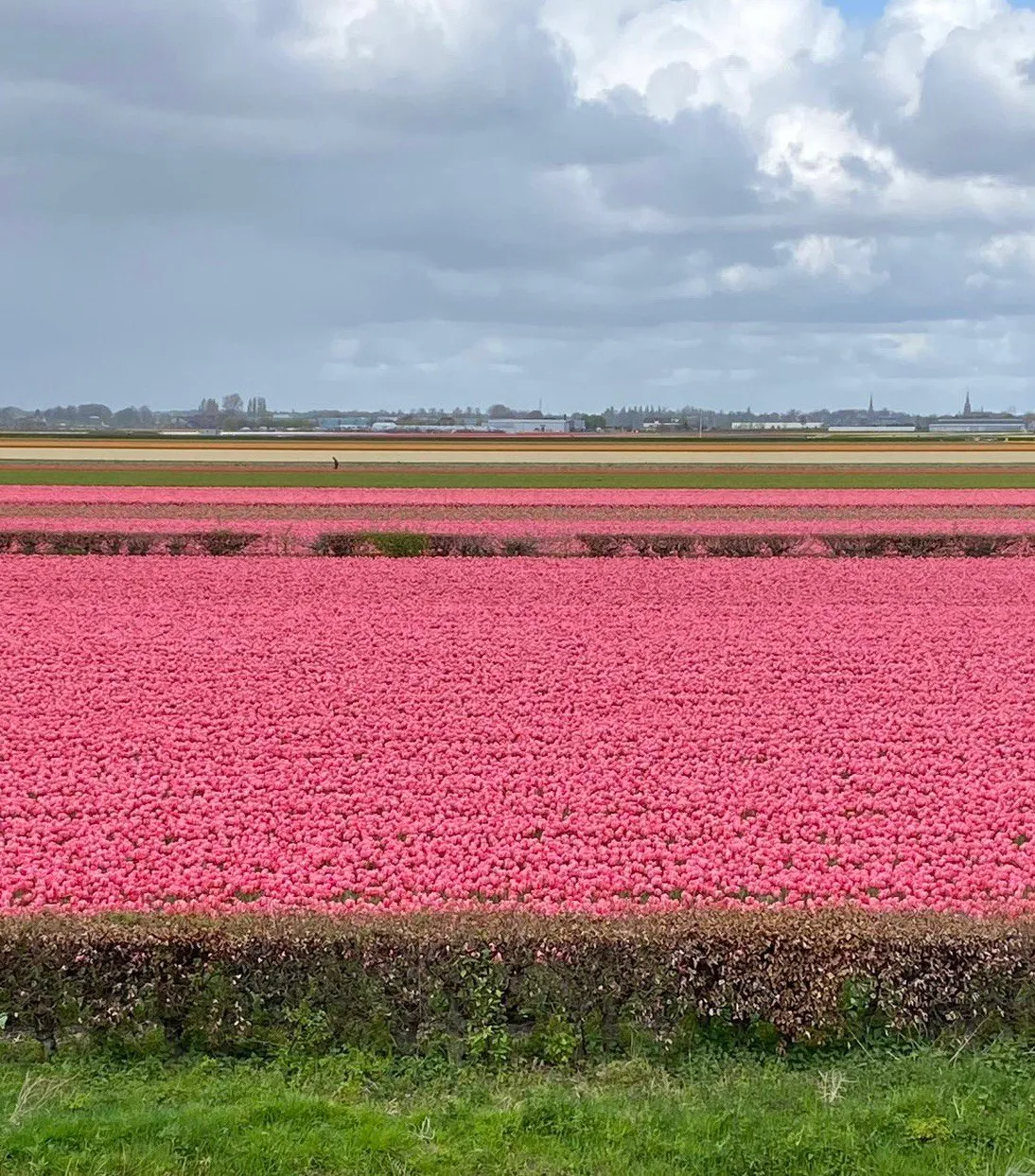
driving or cycling by the gardens.

Tulips in the fields are grown for the bulbs. Therefore, after 2-3 weeks they are headed off - that means that the flowers are cut off so that energy can be retained in the bulbs.
History of the gardens and the Castle
The last time I visited, a gardener told me that the garden is named after Castle Keukenhof. I was curious about it and literally had to go further afield - a few minutes away to see it. Upon arrival, the castle was closed but I could still make a few photos.

the side of the castle
The castle was built on the 200 hectare property in 1641. The current gardens were the hunting grounds and food garden for the Keukenhof castle. The name in dutch translated to english is Keuken=kitchen and hof = (garden/court).

the front of the castle
When one sees flowers a smile is inevitable. I wish we could all have flowers to fill each and every day. As I wandered around the gardens, I noticed how quiet it was. There seemed to be a certain reverence and appreciation which must have rendered everyone speechless. We were most certainly at a loss for words.

All in all, a day trip to Keukenhof in Lisse is well worth your time if you would love to be surrounded by flowers, beauty and history.
All photos are my own. Please do not use without permission.